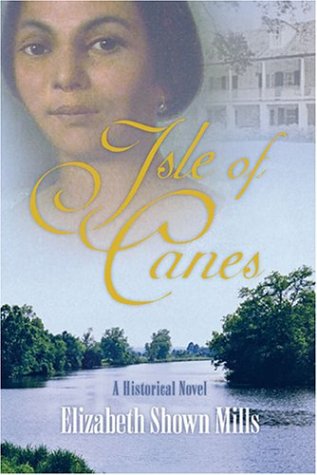Isle of Canes
I’ve never read a novel quite like this. Written by an eminent genealogist and meticulously documented, it could have been a textbook case of good history but bad fiction. Introductory matter, including eight pages of family trees, made me hesitate even more. Would I ever get to know all these people? I need not have worried. Mills is a natural storyteller, and her novel is a masterpiece. Long and involved but never boring, it’s an example of what all historical novels should be.
It begins with François, an Ewe carpenter brought to Louisiana on a slaver’s ship in 1735. His bride is Fanny, daughter of an African king, a proud woman who slowly accepts her fate. Their daughter Marie-Thérèse, known as Coincoin, lives in slavery for decades before becoming the mistress of Pierre Metoyer, a Frenchman who first buys her, then frees her. Coincoin’s first act is to purchase, then free, her own half-Negro daughter, a practice her family continues. Augustin, Coincoin’s son, becomes patriarch to a large family and achieves the southern antebellum version of the American dream. Respected, powerful, and immensely wealthy, Augustin owns more acres – and more slaves – than most whites could ever envision. (Readers may remember him from Lalita Tademy’s Cane River, which was based partly on Mills’ own research.) Augustin’s daughter-in-law Perine, a strong woman built in Coincoin’s image, keeps his memory alive during hard times.
The action unrolls dramatically against 150 years of Louisiana’s history, as the Spanish and French struggle with each other, and with the intrusive Anglos, for control. Over time, the Metoyers’ fortunes rise and fall, but never as low as during the Civil War – which loses them more freedom than it gains. The Metoyers, a historical family both black and white and yet neither, challenge all perceptions of racial boundaries. You may never look at American history the same way again.










